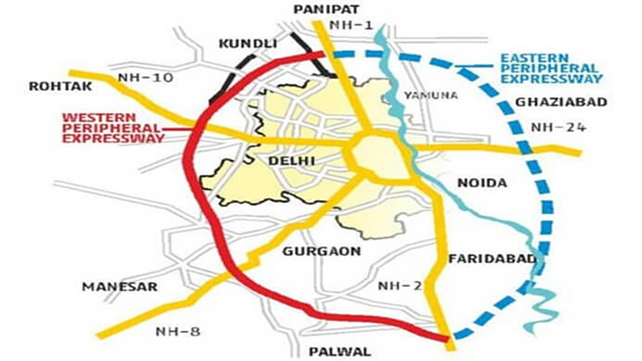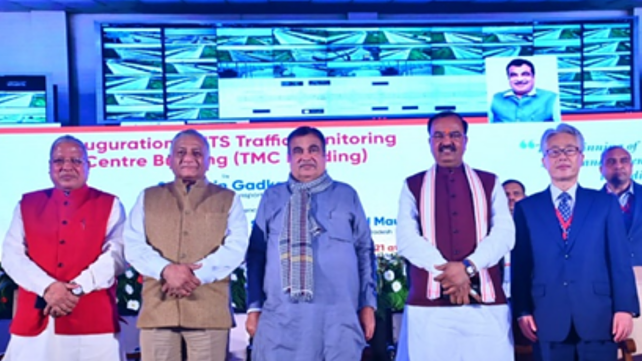
The National Highway Authority in India (NHAI), along with Japan International Cooperation Agency (JICA) has rolled out the country’s first Intelligent Traffic System (ITS) network on the 135-km long Eastern Peripheral Expressway (EPE).
The inauguration ceremony, which was held at the Traffic Management Centre in Dasna, Ghaziabad, was attended by Nitin Gadkari, Union Minister of Road Transport and Highways; Rtd General Vijay Kumar Singh, Minister of State, MoRTH; Suzuki Satoshi, Ambassador of Japan to India, Saito Mitsunori, Chief Representative of JICA India and other officials from India and Japan.
The Delhi EPE ITS project was implemented by the NHAI with financial support provided by Japan, amounting to ¥ 6,870 million (approximately INR 453 crore) to introduce ITS comprising advanced traffic management system (ATMS) and toll management system (TMS) in the 135-km-long expressway.
The JICA assistance to this project is aimed at constructing an advanced traffic monitoring/ management system to meet the increasing traffic volume, such as mitigation of traffic congestion at the toll gates and reducing the accident rate on Delhi EPE, a release said. The installed ATMS will collect information of road conditions, traffic conditions and weather conditions at the traffic control centres and will provide the necessary information of roads, real time traffic and weather to road users 24X7, all around the year.
This system will also help to monitor unauthorised parking, vehicle breakdowns, cattle-menace and in issuing e-challans to the violators.
On the other hand, the TMS will include a rationalised distance-based toll system to deal with traffic congestion and a Radio Frequency Identification (RFID) system, which is a standard system for national highways in India, will be used in the Electronic Toll Collection System (ETC) system. This system will reduce the waiting time at toll gates and result in saving in travel cost of the commuters.

Since 1992, JICA has extended ¥ 594 billion (approximately INR 40,000 crore) through 19 projects as concessional ODA loans for development of road sector in India. Satoshi pointed out that improving road traffic environment is not only crucial for economic growth and enhancing supply chain, but also for reducing carbon dioxide emissions in the transport sector.
Japan always stands with India in terms of enhancement and improvement of connectivity, the Japanese ambassador said.
“With rapid urbanisation, severe traffic congestion is becoming a serious economic problem by causing a bottleneck for business activities. Delhi, second largest city in India surrounded by the other states (Uttar Pradesh and Haryana), is an important point of road transportation. It is quite significant that Introduction of ITS system will reduce the waiting time and travel cost, and will increase safety, comfort and convenience of road transportation,” Mitsunori said.